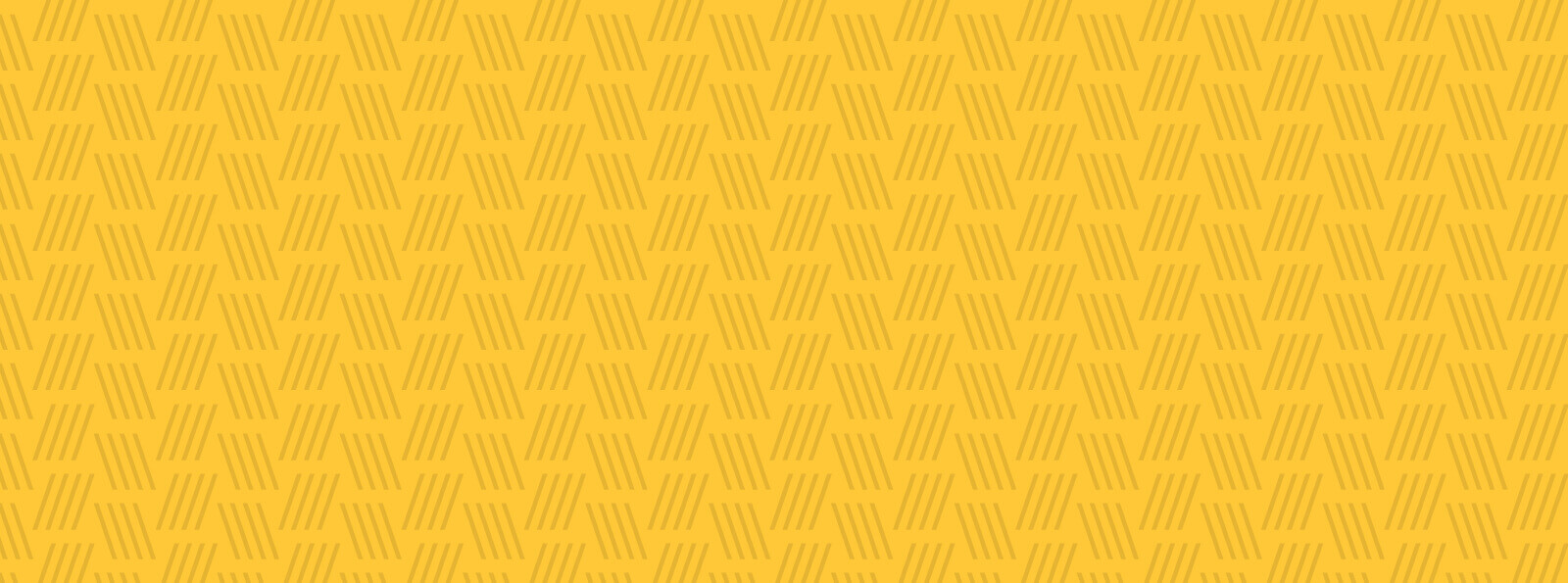About the Artist
J. Jordan Bruns is an artist and teacher living and working in Maryland and a Glen Echo Park resident artist working in the Chautauqua Tower. He recently returned from a three-year sabbatical in Tokyo, Japan (2018-2021) where much of his current aesthetic influences stem from. In 2004, he received BFAs in Painting and Illustration at Maryland Institute College of Art. He then went on to earn an MFA in Studio Painting at Indiana University in 2007. After grad school, he instructed at and managed the Yellow Barn Studio and Gallery, at Glen Echo Park in Maryland. His love of teaching has led him to branch out and become Director of Art Clinic, a painting and drawing school at Glen Echo Park, Maryland in 2022. His artwork is in the public collections of Novartis Pharmaceuticals and Kaiser Permanente. Solo exhibitions include Long View Gallery (Washington, DC) and The Indiana University Art Museum (Bloomington, Indiana). His numerous group shows include “Transient Geometries” at The Antelope Valley College Art Gallery (Lancaster, California) and “Color Schooled” (Long View Gallery, Washington, DC). His work has also been exhibited in Scope Miami in 2014, Context Miami in 2017 and 2018 as well as Aqua Miami in 2019 during Art Basel.J. Jordan Bruns website Art Clinic J. Jordan Bruns website Resident Artist
Artist's Statement
My work is about balance: how opposite or contrary forces complement each other and become awe-inspiring and beautiful. At times, these forces remain independent of one another but more frequently they become intertwined, indistinguishable, and connected. For me, this balance begins in the creation process by layering non-controllable paint applications like pouring and dripping with more controllable techniques such as using hand-cut stencils or classical oil applications. Balance is also mirrored in the mediums used to create my paintings. Shellac, resin, and spray paint create chaos; while acrylic, ink, and oil paint create order. As the painting creation progresses and a dialog between the painting and myself is established, I coax (but not dictate) the imagery to communicate dualities of triumph vs. tragedy, light vs. darkness, and most importantly order vs. chaos.Featured Work
Photos
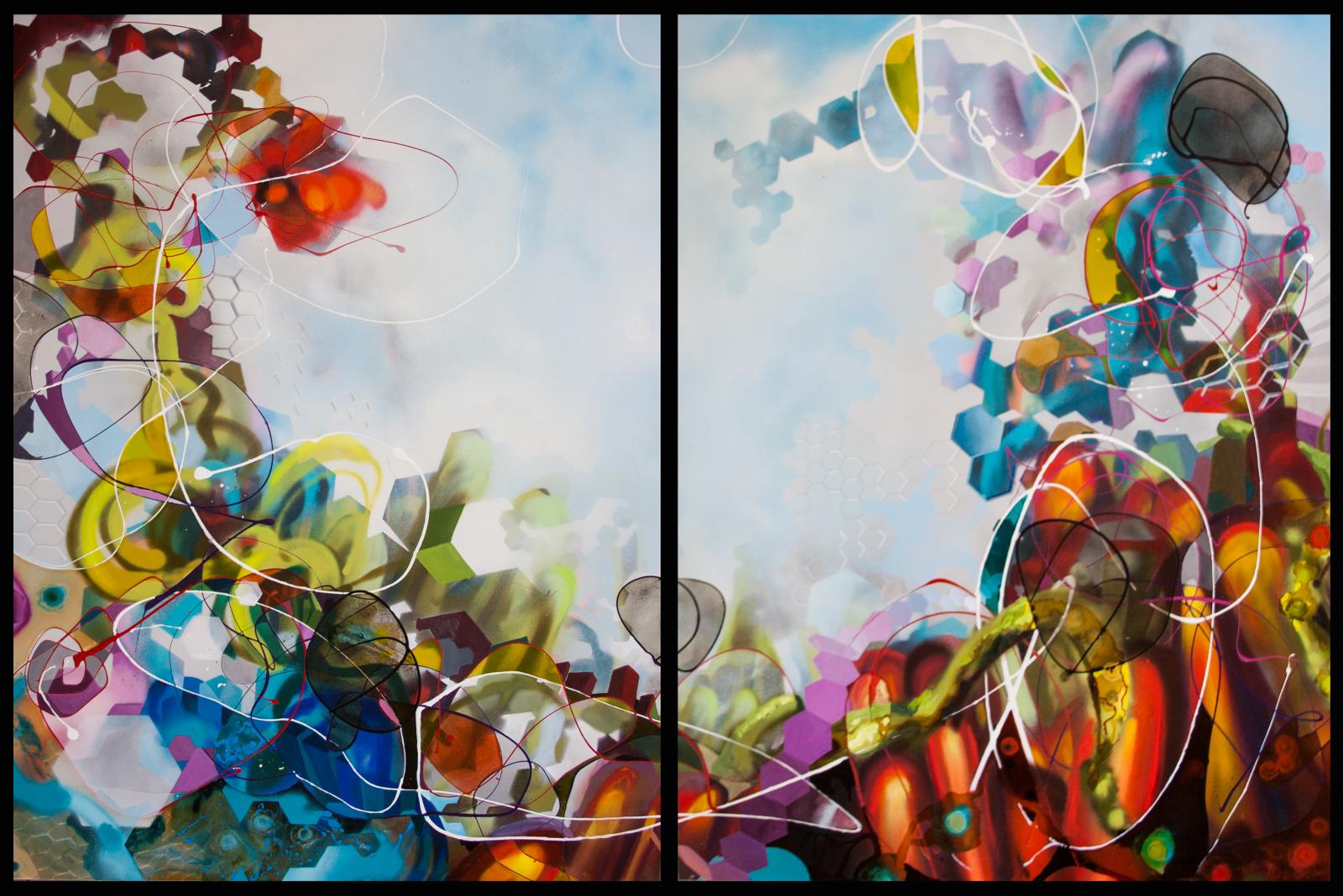
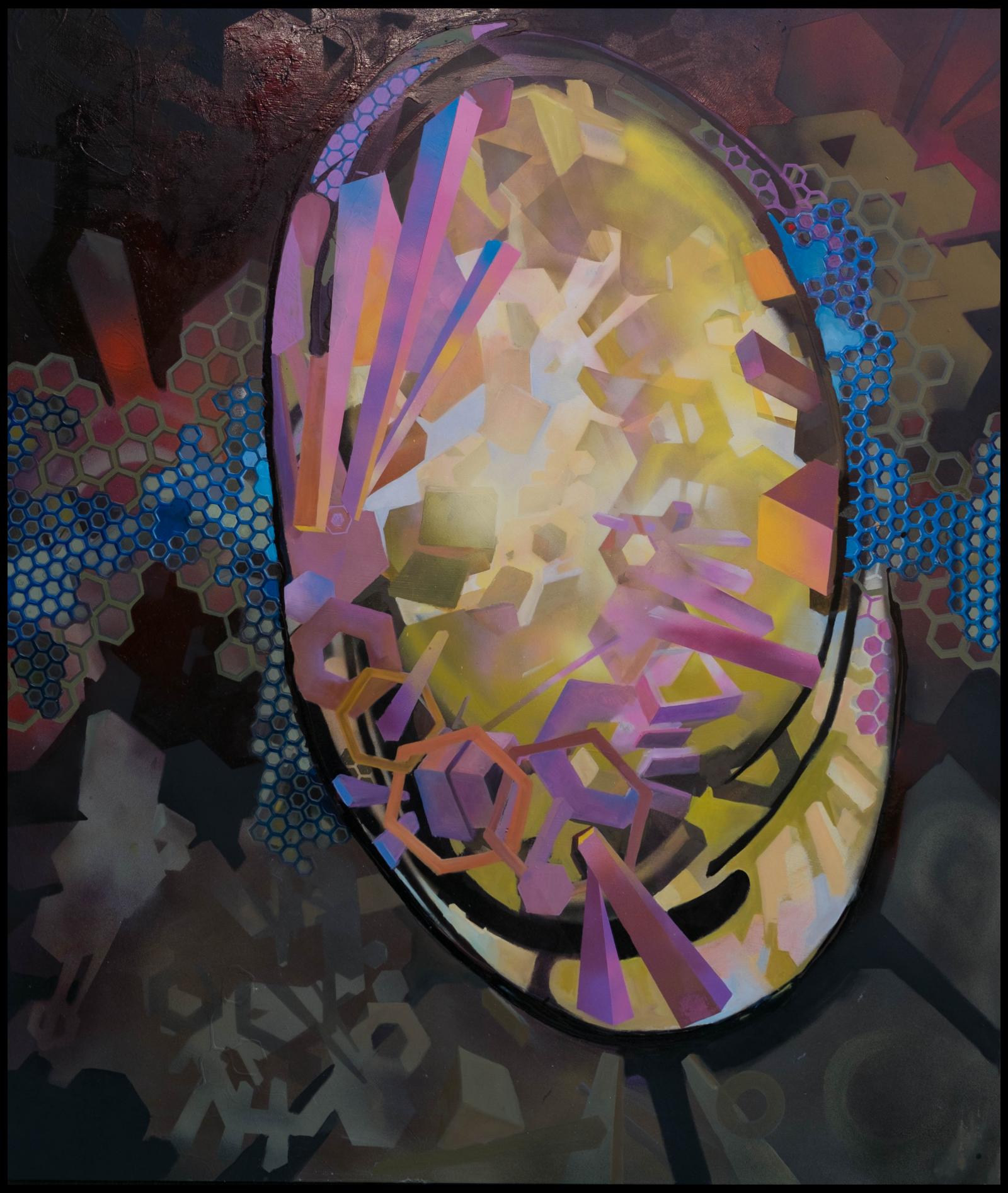
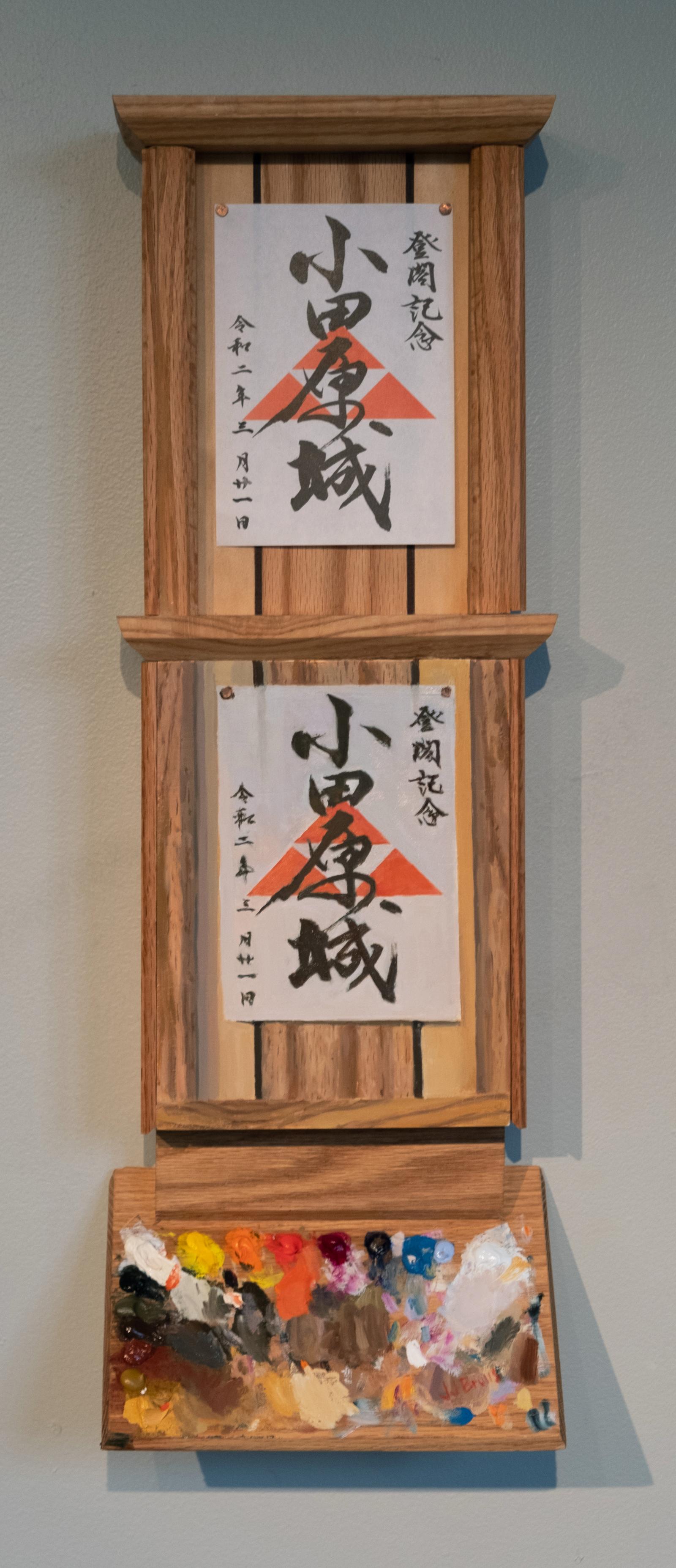
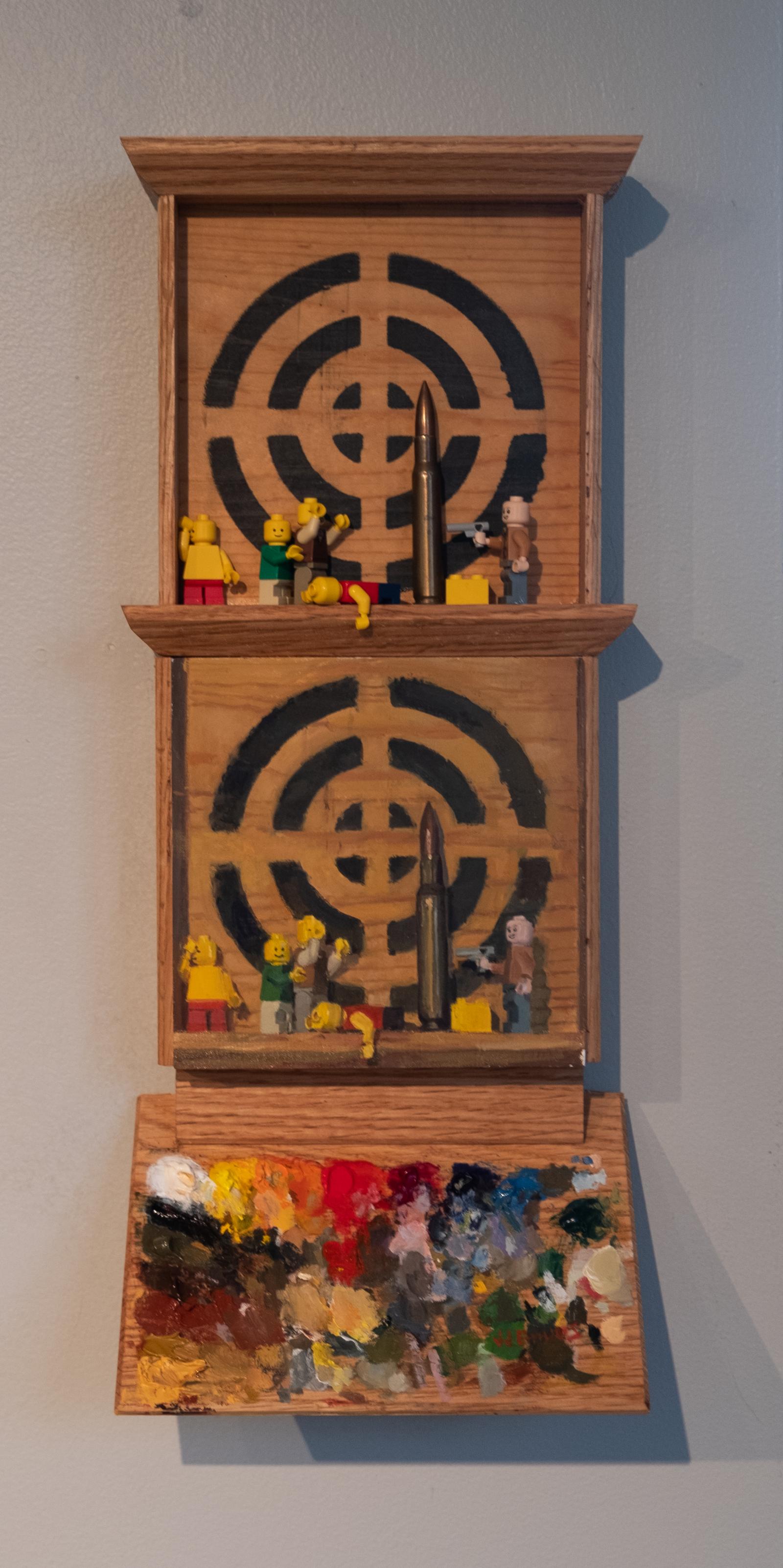
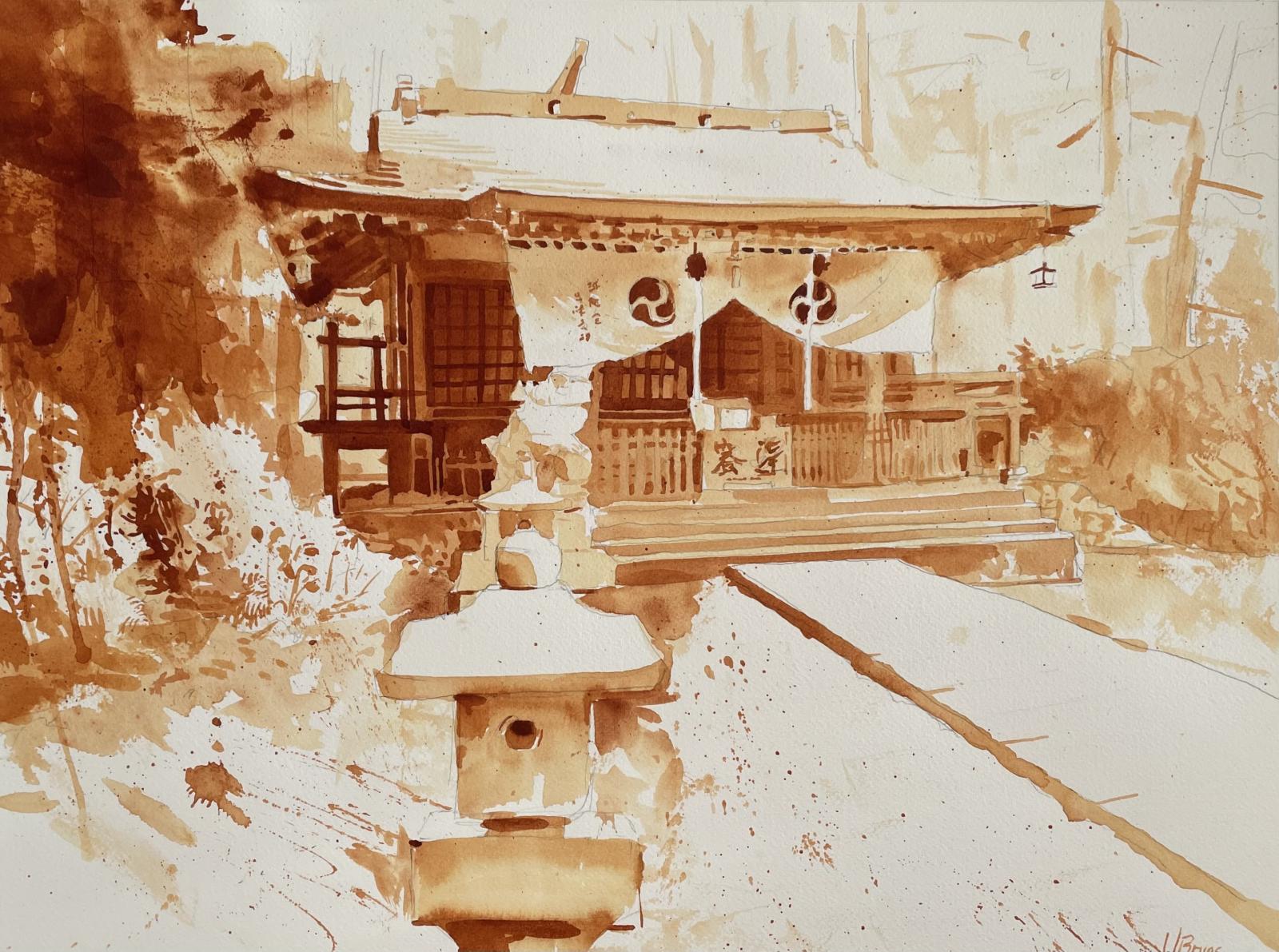

Featured Work: Photos
Party Favors for Honey Bees
mixed media paint on on panel
2014
diptych abstract surrealism mixed media
Hatchling no.1
mixed media paint on panel
2017
mixed media on panel
小田原城 Odawara Castle
assemblage found objects and oil on panel
2022
Normally, viewers of art, specifically paintings, see the final product. The painter, on the other hand, is privy to the subject matter’s appearance in a specific location providing unique lighting. That reality is never seen by the viewer, so the painting is never scrutinized against the subject itself. Considering some artist’s liberal use of “artistic license”, the final painting could look drastically different from the subject.
In this body of work, the painting is centered in an assemblage construction. The paintings are done on a 2-3” thick panel where found objects are permanently secured to the top of the painting surface in a shrine-inspired display that I construct, and the painting pallet is likewise secured to the bottom. The painting is then executed from disciplined observation of the objects, using the attached palette to mix colors providing proof of work. This is largely a reaction to American daily life that is subjected to the news media describing fact as bendable rather than concrete, even when the facts are out in the open. So, for me, I am treating “artistic license” as bending the truth.
More recently, the assemblages reflect my three years living in Japan. As such, respect, humility, and honesty have become the focus of the work. Being of non-Japanese descent, my body of work is from an outsider’s point of view, which poses unique questions such as western appropriation vs. intent to honor a culture. For me, misinterpreting these objects through false embellishments would do them dishonor so truth is paramount.
The Shinto religion prevalent in Japan revolves around the worship of Kami, or spirits that live within objects or natural forces. Almost eighty percent of Japanese believe in some form of Kami, and that they have a specific life-giving, harmonizing power, called musubi that becomes stronger the older or more revered/loved the object is. The other aspect of Kami that makes them important is their truthful will or sincerity, called makoto. When Kami are respected and honored, they are good and benevolent, when disrespected - not so much. While I do not practice Shinto, I know/feel in my heart that some objects have more significance to me. As an artist, the best way I can pay honor to the Kami/object is to paint it. Once the assemblage is sold and hung in its new exhibition space, I encourage patrons to allow me to repaint the work in its new resting place, to match the lighting environment or to make the Kami more comfortable in its new home.
For Sale
$2,500.00
Contact the artist to purchase this piece
Shooting – After Goya’s El tres de mayo de 1808 en Madrid
assemblage found objects and oil on panel
2022
Normally, viewers of art, specifically paintings, see the final product. The painter, on the other hand, is privy to the subject matter’s appearance in a specific location providing unique lighting. That reality is never seen by the viewer, so the painting is never scrutinized against the subject itself. Considering some artists’ liberal use of “artistic license”, the final painting could look drastically different from the subject.
In this body of work, the painting is centered in an assemblage construction. The paintings are done on a 2-3” thick panel where found objects are permanently secured to the top of the painting surface in a shrine-inspired display that I construct, and the painting pallet is likewise secured to the bottom. The painting is then executed from disciplined observation of the objects, using the attached palette to mix colors providing proof of work. This is largely a reaction to American daily life that is subjected to the news media describing fact as bendable rather than concrete, even when the facts are out in the open. So, for me, I am treating “artistic license” as bending the truth.
This piece is reactionary to gun violence, specifically school shootings. While painting the piece, I noticed that the subject matter, which was disturbing at first, became less impactful the longer that I became involved with the painting process. This felt symbolic to me as the media is constantly reporting mass shootings, but Americans have become desensitized.
For Sale
$2,500.00
Contact the artist to purchase this piece
Shirane Shrine
ink on paper
2022
ink washes based on my three years living in Tokyo Japan
For Sale
$750.00
Contact the artist to purchase this piece
Chuson-ji no.3
ink on paper
2023
ink wash based on my three years living in Tokyo, Japan
For Sale
$750.00
Contact the artist to purchase this piece
